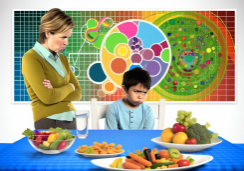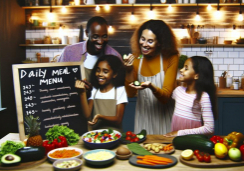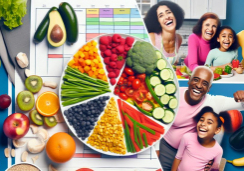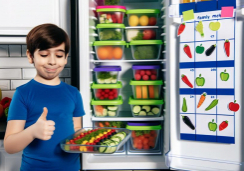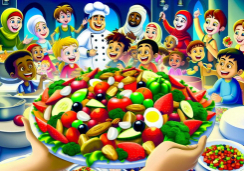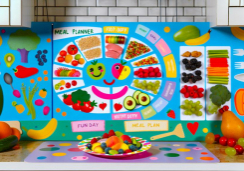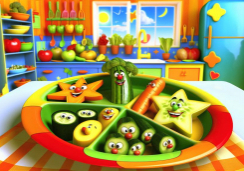Ultimate High-Protein Vegan Meal Planning Guide
Perfecting your plant-based plates to pack in ample protein can be a puzzling process, but you're in luck—this guide is your pathway to navigating the nuanced world of high-protein vegan meal planning.
You've likely heard the skeptics question where vegans get their protein from, yet you'll soon discover a diverse array of delectable dishes that defy this common concern. As you explore this guide, you'll learn how to combine legumes, grains, nuts, and seeds to meet your nutritional needs without a hint of animal products.
But there's more to it than just mixing and matching—understanding the science behind protein absorption and the importance of complementary proteins is key for your health and muscle maintenance.
Stay with us as we unveil the secrets to a satisfying, protein-rich vegan lifestyle that supports your fitness goals and leaves your taste buds tantalized.
Essential Protein Sources
To ensure your vegan diet is protein-rich, incorporate foundational foods like beans, lentils, tofu, edamame, and spinach, which are packed with essential amino acids and vital nutrients.
Beans offer a substantial 15 grams of protein per cup, making them a staple in any high-protein vegan meal plan.
Lentils, with 18 grams of protein per cup, aren't just a protein powerhouse but also a versatile base for numerous dishes.
Tofu, often the hero in many plant-based foods, provides a hefty 20 grams of protein per cup. It's perfect for a tofu bowl or as tofu croutons atop a salad.
Edamame, a delightful snack or side, contributes 17 grams of protein per cup.
Lastly, spinach, though lighter at 5 grams of protein per cooked cup, is an easy addition for a nutritional boost.
Daily Meal Breakdowns
Embarking on a week of high-protein vegan eating, you'll find a diverse array of breakfast, lunch, snack, and dinner options that aren't only nutritious but also cater to your daily protein needs. Each carefully crafted high-protein vegan meal ensures you're meeting your body's requirements while enjoying a variety of plant-based meals.
- A breakfast of quinoa porridge topped with almonds and hemp seeds kick-starts your day with a protein boost.
- For lunch, a lentil salad with a generous cup of edamame adds a high-protein punch.
- Midday snacks might include a serving of vegan Greek-style yogurt or a smoothie with pea protein powder.
- Dinner could be a hearty chickpea curry with a side of spinach, ensuring you're not just full, but also nourished.
- Dessert isn't off-limits: a black bean brownie can satisfy your sweet tooth and add an extra dose of protein.
Adjusting your meal plan to fit 1,500 or 2,000 calories a day is straightforward when you're aware of the protein content in foods like lentils and beans. With strategic meal prep, you can ensure you're getting enough protein per day, typically ranging from 46 to 56 grams for adults, while enjoying all the benefits a vegan diet offers.
Meal Prep Strategies
Maximizing your time and nutrition, strategic meal prep is key to maintaining a high-protein vegan diet throughout the week. To ensure you're consuming meals high in protein and calories sufficient for your needs, you'll want to meal-prep your week with precision.
Start by planning each plant-based meal, including vegan snacks that keep you satisfied between meals. Remember, every meal is an opportunity to add protein and nutrients essential for your health.
When you create your shopping list, make sure it reflects your meal plan, focusing on diverse vegan food items that contribute to a balanced plant-based diet. Efficiency is paramount, so wash and chop your veggies in advance. This not only saves time but also makes it easier to assemble your meals.
Cooking your protein sources, such as tofu, beans, or tempeh, beforehand is a smart move. These staples are versatile and can be added to a variety of dishes, ensuring you're getting the protein you need.
Lastly, cooking in bulk is a game-changer. Divide your meals into individual portions, label them with the date, and you've got a fridge full of ready-to-go, plant-based meals that make staying on track with your high-protein vegan diet a breeze.
Nutritional Balance Tips
Achieving nutritional balance in a vegan diet requires careful planning to ensure each meal provides a harmonious blend of protein, carbohydrates, and healthy fats. While embarking on a high-protein vegan plan, you might be concerned about not just meeting your protein needs but also ensuring your diet is nutritionally complete. Here are some tips to keep your meals balanced:
- Diversify your plate with a rainbow of fruits and vegetables to get a wide range of vitamins and minerals.
- Include whole grains and legumes, which are great sources of protein and fiber, essential for digestive health.
- Focus on healthy fats from nuts, seeds, avocados, and plant-based oils to support heart health.
- Pay attention to iron and calcium-rich foods like leafy greens, tofu, and fortified plant milks.
- Don't forget to hydrate; water is crucial for all bodily functions.
Vegan Snacking Ideas
When hunger strikes between meals, reaching for a vegan snack that's not only satisfying but also packed with protein can keep your energy levels steady and support your nutritional goals.
Consider the simple pleasure of fresh fruit with a dollop of natural peanut butter. This classic pairing offers the sweet satisfaction of fruit with the rich, creamy protein punch of peanut butter.
Edamame, a staple in plant-based diets, serves as an excellent high-protein snack. Just a cup of these young soybeans provides a substantial protein boost. They're perfect to snack and add to your mid-day routine, keeping you full and focused.
For those moments when you crave something crunchy, air-popped popcorn sprinkled with nutritional yeast can be a delightful way to satisfy that itch while incorporating whole grains and protein into your vegan eating plan. Cups mixed with nuts and seeds can also offer a portable, nutrient-dense snacking option.
Don't overlook the potential of energy balls or homemade protein bars. By selecting ingredients like oats, chia seeds, and natural peanut or other nut butters, you're crafting snacks that are as delicious as they're nourishing. These high-protein vegan delights aren't just tasty; they're also aligned with your healthful lifestyle.
Frequently Asked Questions
What Do Vegans Eat on a High Protein Day?
On a high-protein day, you'll enjoy plant-based seitan, protein-packed tempeh, and a legume variety. Your meals might feature quinoa bowls, tofu scrambles, and edamame snacks, garnished with nutritional yeast and hemp seed sprinkles.
How Can Vegans Get 140g of Protein a Day?
You can reach 140g of protein by including legume varieties, protein-rich grains, and soy product options in meals. Add nut and seed snacks, tempeh recipes, and protein smoothies to hit daily protein targets.
What Is the Highest Form of Protein for Vegans?
You'll find the highest vegan protein in protein-rich tempeh and seitan's versatility. Explore legume benefits, tofu variety, and spirulina boost. Add hemp seeds, quinoa dishes, and nutritional yeast for balance. Don't buy into vegan protein myths.
How to Get 150g Protein Vegan?
To hit 150g of protein, you'll want protein-rich grains like quinoa, diverse legumes, and soy staples. Add seitan, nutrient-dense snacks, and protein smoothies. Dispel vegan protein myths with balanced meals and smart timing.
Conclusion
You've got this! With a variety of plant-based proteins at your fingertips, you're ready to tackle your weekly meal prep. Remember to mix it up, keeping your meals exciting and nutritionally complete.
By strategically planning your snacks and main dishes, you'll effortlessly meet your protein needs. Stay mindful of your macros and listen to your body—it's the best guide you have.
Embrace the power of high-protein vegan foods and enjoy the journey to a healthier you!

